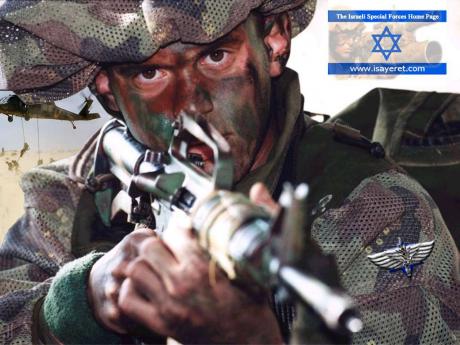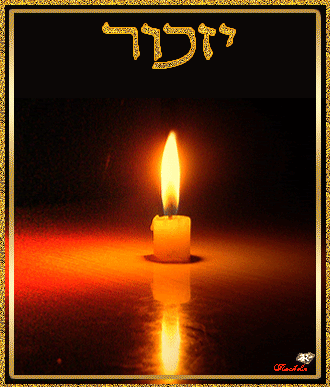The Israeli SF history can be divided into three time periods:
* Activation of Special missions units before the declaration of the Israel state.
* 1948-1974: The establishment of the SF units after the declaration of the Israeli state.
* 1974: The acquiring of Counter Terror and hostage rescue capabilities.
Activation of Special units before the declaration of the Israel state:
During 1920-1945, Israel was under a British regime (Mandate). The civilians were both Jews and Arabs and they frequently engage each other, usually over territorial disputes. The British mostly sided with the Arabs, and while the Arabs were allowed to carry weapons, the Jews weren't allowed to organize, carry arms and to protect themselves. As a result, in 1920-1929 the Israeli Jews formed several underground resistance movements, with main purpose of protecting fellow Jews from the Arab terrorists attacks, and eventually to force the British out of Israel.
The largest and most powerful of those underground movements was the Defense ("Hagana" in Hebrew). In 1941 the Hagana formed the Smash Companies ("Plugot Hamachat'z - PALMACH", in Hebrew), which were the SF Units of their time. Among the PALMACH were the Undercover Mistaravim teams (known then as the 'Arabic Platoon'). These special teams were dressed as Arabs and were used to covertly move weapons and equipment.
When the Israeli state was formed, and the IDF could freely and openly move its equipment, there was no longer a need for these teams and they were disbanded. But in 1987 when the Intifada - the Palestinian uprising against the Israeli regime in the Occupied Territories - broke out, the Israeli security services (the IDF, the Israeli Border Guard - MAGAV and the Israeli Police - IP) that were inspired by the success of PALMACH Mistaravim teams, formed new units of Mistaravim.
While the PALMACH handled land-based assignments well, the Hagana also needed a dedicated maritime special unit. So, in 1943 the PALMACH's Sea Company ("Plugat Hayam" - PALYAM, in Hebrew) was formed. As their name suggests, the PALYAM were in charge of underwater demolition and maritime activity units. The majority of its activities were yet related to the escorting of ships: immigration ships (while the Exodus became the most famous, there were altogher 66 of them), and many arm ships that carried vital arms to Israel during the Independance War. These activities included a lot of land activities primarily in Italy & France, but also in Romania, Bulgaria, Sweden, Franch Algeria, Greece & Yoguslavia, preparing the ships and the immigrants (ma'apilim). In this prime role, the Palyam members were working under the operational command of the Mossad Le'aliya Bet, and speacial envoys of the Hagana for arm procurement. In 1948, when the IDF was formed, many of the PALYAM members joined the IDF Navy and formed its core personnel and command. In particular, the PALYAM members who specialized in maritime sabotage joined in to form the famous Shayetet 13, the IDF Naval Commando unit.
1948-1974 the establishment of SF units after the declaration of the Israeli state:
In 1948 all the resistance movements were joined together in order to form the IDF. One of the Hagana outfits - the Golany unit, was turned into the IDF first infantry brigade in February 48 - the Golani infantry brigade.
When reassigned under the IDF command, the Golany infantry brigade formed the Special Reconnaissance Platoon. This platoon was a Long Range Reconnaissance Patrol (LRRP) Unit, acting as pathfinder for the infantry brigade. But unlike the other reconnaissance platoons that existed in each of the Golany brigade's battalions, the Special Reconnaissance Platoon was also in charged on taking out key enemy strongholds, and execute more complex missions such as demolition and intelligence gathering.
The Special Reconnaissance Platoon was in fact the first official Israeli SF unit. Later, it evolved into Sayeret Golani, which is today considered as one of the finest units in the IDF.
In June 1948 the IDF formed its Paratroopers airborne unit - the T'zanhanim Company. The T'zanhanim Company was designed as an elite infantry unit tasked with the most demanding missions.
In the early 1950's the Arabs (both terrorists and full fledged armies) launched thousands of assaults against the Israeli borders, aimed mainly at civilians. The IDF attacked in retaliation, but the regular infantry units (including the T'zanhanim) were simply not up for the task. So in 1951 the IDF formed Unit 30 - a classified Unit that belonged to the IDF South command. Unit 30 was designed to execute retaliation missions while operating in small and well-trained teams.
However, Unit 30 operatives lacked sufficient and proper SF training, and performed poorly, so in 1952 the Unit was disbanded.
In August 1953, the IDF tried again to form a dedicated new SF unit, and created Unit 101 as a SF unit designed to perform complex missions far behind Israeli borders. Unit 101 was composed of 20-25 men, most of them former T'zanhanim and Unit 30 personnel.
The creation of Unit 101 was a major landmark in the Israeli SF history. Unit 101 established small unit maneuvers, activation and insertion tactics that are utilized even today. Beside Sayeret MATKAL, Unit 101 is considered to be the unit with the most influence on the Israeli infantry oriented units including both special and conventional units.
Part from its tactical innovations, Unit 101 was also unique in two ways:
* It was the first time the IDF formed a brand new SF unit from scratch, rather then modify a previously exiting infantry oriented unit, like with the Golany brigade Special Reconnaissance Platoon.
* It was the first time the IDF formed a unit that received its orders directly from the IDF General Staff (the IDF High Command - MATKAL) and not by a lower sub-command.
Unit 101 only existed for five months and was disbanded after a raid in which the unit's members killed dozens of unarmed enemy citizens in an infamous brutal retaliation act.
Once disbanded, Unit 101 was merged with T'zanhanim company. After the merger the joint outfit turned into a brigade size unit, composed of two battalions - 869 Battalion (made out of the original T'zanhanim company personnel) and 101 Battalion (made out of former Unit 101 personnel).
With the increase in manpower, the T'zanhanim unit became an elite infantry brigade rather the elite infantry company as it was before. This merger was actually quite ironic since the T'zanhanim officers were originally the biggest opposition against the creation of Unit 101 as simply didn't wanted another competitor for prestigious retaliation missions that until the formation of Unit 101 where their own bread and butter.
With the much larger personnel, Arik Sharon, the former Commanding Officer (CO) of Unit 101 and then the new CO of the T'zanhanim infantry brigade, was able to launch full scale SF attacks against Arab terrorists, and the T'zanhanim infantry brigade pretty much ruled all the Israeli SF operations in the rest of 1950's.
In the late 1950's the IDF noticed that since the T'zanhanim Unit had turned into a infantry brigade rather then the SF unit it was before, it was lacking a small SF unit. So in 1958 Abraham Arnan formed Sayeret MATKAL, answering directly to the IDF High Command.
In many ways, in its formation, Sayeret MATKAL combined the operational experience gathered by Unit 101 and the unit's structure of the UK Special Air Service (SAS) - the role model for SF units worldwide.
Sayeret MATKAL was also formed one year after the IDF first helicopter squadron became operational in 1957. With a close cooperation between the two outfits, the unit was able to deploy longer and deeper then any unit before.
After losing the prestigious SF title, the T'zanhanim brigade formed it own SF unit - Sayeret T'zanhanim in October 1958, mainly as a response to the creation of Sayeret MATKAL.
In the early 1970's and especially throughout the 1960's there was a new trend in the IDF - the Regional Command Sayerets. Israel is operationally divided into three commands - South, North and Center. After witnessing the successful formation of Sayeret MATKAL and Sayeret T'zanhanim in the late 1950's, each command also wanted a SF unit of its own. So units like Sayeret Shaked (South Command), Sayeret Shoualey Shimshon (South Command), Sayeret Harouv (Center Command) and Sayeret Egoz (North Command) were formed.
While those units were supposed to be skilled LRRP units, performing delicate intelligence gathering missions, most of them soon became raids units competing with Sayeret MATKAL, S'13 and Sayeret T'zanhanim on the raids missions.
The command-level raids Sayerets were loose cannon units, acting as autonomous outfits, with no discipline what so ever. After those units ran wild for few years in the 1960's, they were all disbanded once the IDF commands realized that they could get the same level of performance from the infantry brigades Sayerets units already existing in each of the infantry brigades, without maintaining several very expensive independent SF units.
1974 - The Acquiring of Counter Terrorism and Hostage Rescue Team Capabilities:
Up until the 1970's, the Israeli SF units (including Sayeret MATKAL) had a very limited Counter Terror (CT) capability and no hostage rescue capability whatsoever. The IDF SF units were mainly hard core infantry LRRP units, which focused their training on the missions they were originally design to perform such as intelligence gathering and open field infantry combat, and didn't train on CT because of budget problems and lack of awareness.
There were no civilian SF units and the IDF was the sole security organization in charge on the security of Israeli state, both domestic and foreign. Back then the Israeli Police handled only criminal nature crimes, and the Israeli Border Guard (MAGAV) handled only borders protection.
Today the situation is completely different as most of the Israeli SF (both military and civilian) have a very advanced CT and hostage rescue capabilities. Many new civilians SF units were created, and the Israeli Police and the MAGAV are in charge on the Israeli state domestic security.
Photos from the terror attack in the Munich Olympics, 1972. Left - a terrorist seen in the Israeli team building. Right - the heliotrope that was supposed to carry the kidnappers and sponges to safety burned after a terrorist toss a grenade into to it during a police raid.
The change occurred happened due to the severe Israeli security situation over the years and several traumatic incidents in the 1970's, when Israel, and the rest of the world, had witnessed a rise in brutal and sophisticated terrorism acts, which Israel was the victim of many such acts.
In the early 1970's Israel was the victim of many CT attacks. In this photo Ehud Barak, the former Israeli Prime Minister, leading Sayeret MATKAL entry team (disguised as refueling personnel) during the Sabena air plane raid, 1972. This mission, officially known as Operation Isotope, was the first successful airplane raid in history. Same as in buses' hostage rescue tactics, the airplane raid techniques developed in the 1970's and in 1980's by Sayeret MATKAL and Unit YAMAM, are used globally even today.
The very worst and painful of those acts from an Israeli point of view was the Mahalot Massacre incident. In May 15, 1974, three heavily armed terrorists took over the Mahalot High School in north of Israel, taking several dozens teachers and students as hostages in the process. Sayeret MATKAL, then the Israeli unit with the most advanced CT capability (together with Sayeret Golany) was selected to carry out the rescue attempt.
At the beginning of the raid, Sayeret MATKAL sniper was suppose to take out the terrorist who was guarding the room in which most of the hostages were being held. The sniper, who was equipped with World War 2 Mauser 98 and not used to short range headshot sniping, failed to kill the target and only wounded him.
The injured terrorist started throwing grenades and began auto-firing at the hostages. More mistakes were made, both in planning and in execution and at the end of the Sayeret MATKAL raid all three terrorists were dead, but 21 children and four adults, all of which civilians, were killed. Moreover, at least two civilians were killed by friendly fire since Sayeret MATKAL entry team was under-trained in CQB pinpoint shooting and hit some hostages who were standing close to the terrorists.
Sayeret MATKAL personnel looking at a dead terrorist after the raid in the Mahalot High School, May 15, 1974. The failed rescue which cost the lives of over 20 civilians what the trigger for the acquiring of the current Israeli SF CT and hostage rescue abilities.
After this fiasco in Mahalot, the Israeli government, with the IDF General Staff, made three important decisions (mainly because of the outraged public opinion):
* An all-new civilian CT Unit would be created under MAGAV, much like the German domestic CT unit - GSG9. This unit was later named Unit YAMAM.
* Most of Israel's SF units would acquire advanced CT capabilities, with Sayeret MATKAL and S'13 in the cutting edge.
* Sayeret MATKAL and S'13 would form one team in each Unit that will specialize In CT scenarios. These two teams are in fact sub units within the Takeover units and have access to best personnel and weapons available to the units, quite similar to the U.S. Navy SEALs and the Development Group (DEVGRU).
Operators from Unit YAMAM during bus hostage rescue training in the late 1970's. Note that all operators are armed with M16A1 then a rare item in Israel.
After the government made its decisions, the Israeli units began a very extensive and intensive training regime, both alone and with foreign instructors. The instructors were mainly from Britain's SAS, the American Navy SEALs and later from the American Delta Force.
Because of the accelerated training and the massive amount of field experience gathered, the Israeli units soon had a tremendous CT capability. In 1980 Sayeret MATKAL and S'13 were fully CT operational and the rest of the units were not far behind.
Sayeret Golany members preparing for their failed hostage rescue operation in the Misgav Ham Kibbutz, 1980. This operation was a land mark in the Israeli SF tactical history since it was the first mission in which CT dogs from Unit Oket'z were deployed against terrorists. Note the very basic gear carried by the operators - regular uniforms, IMI Uzi SMG, and bullet proof vests.
In 1985 another important step was made. The Mitkan Adam army base, the IDF Special Training Installation, was formed including the IDF CT Warfare School (Unit 707) and the IDF Snipers School.
The CT units began structural and organized training instead independent training as was before. Soon all units had the same training and used the same tactics, which much helped in the case of joint unit operations.
Between 1980 and 1990, although all units were fully CT qualified and operational ready, the responsibilities of each units were not clear since there was no operational plan stating that. Every time a CT scenario happened, the nearest units to the area arrived and started arguing on who would execute the raid. This often led to the fact that the unit, which was finally selected for the job, was not necessarily the best fitted one but rather the one who arrived to the scene first, or the one who had the biggest influence in senior officer ranks.
In order to solve this problem a new plan was written in 1990. The "Army of the Sky" plan
(T'zva Shamayim - T'ZAVACH", in Hebrew) stated which unit does what and when. T'ZAVACH is basically the plan by which Israel fights terrorism both domestic and foreign, until this very day.
In 1987 the intifada broke out and several Israeli undercover CT units were formed in the IDF, MAGAV and in the Israeli Police.







No comments:
Post a Comment